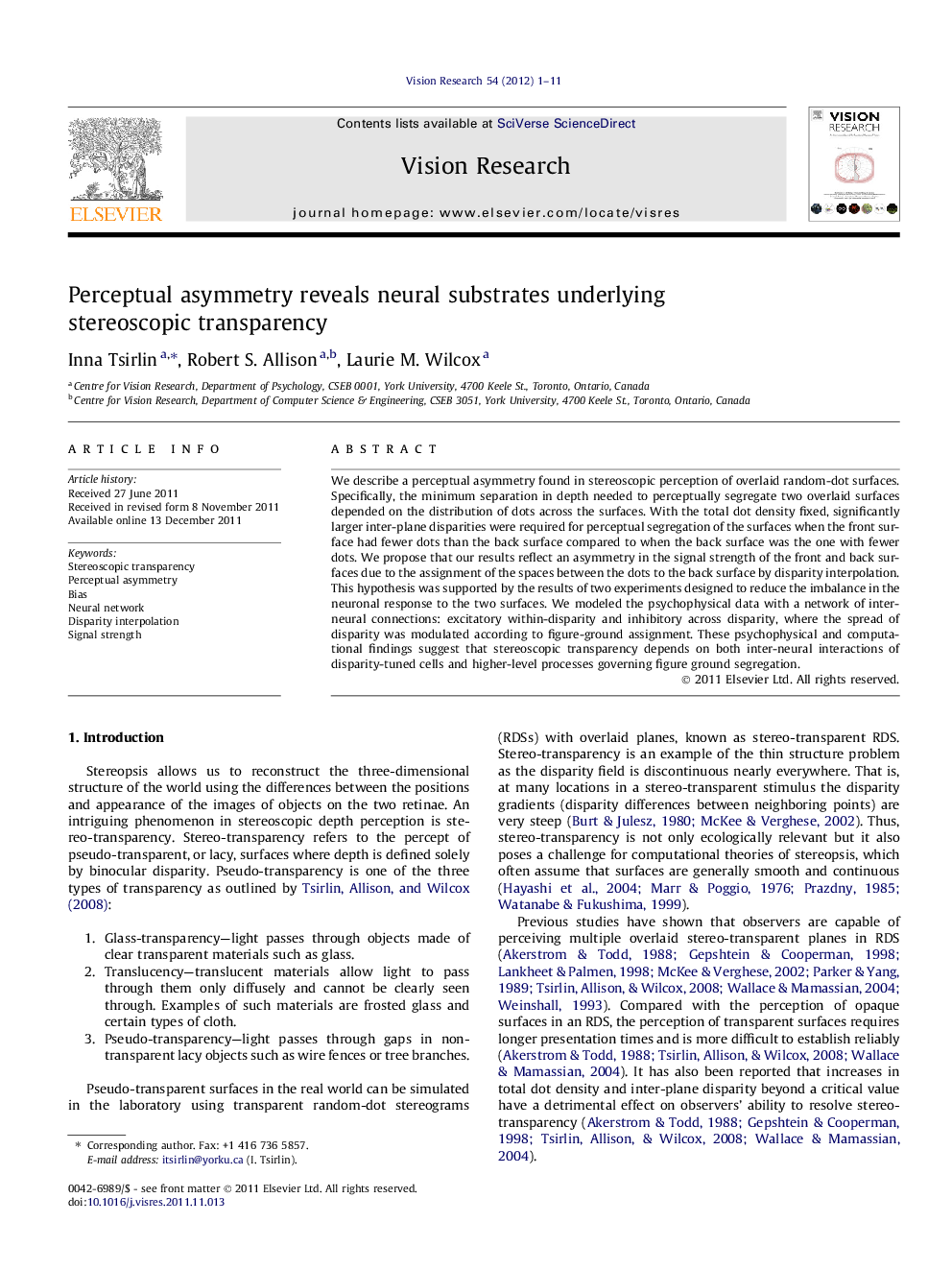| Article ID | Journal | Published Year | Pages | File Type |
|---|---|---|---|---|
| 6203722 | Vision Research | 2012 | 11 Pages |
We describe a perceptual asymmetry found in stereoscopic perception of overlaid random-dot surfaces. Specifically, the minimum separation in depth needed to perceptually segregate two overlaid surfaces depended on the distribution of dots across the surfaces. With the total dot density fixed, significantly larger inter-plane disparities were required for perceptual segregation of the surfaces when the front surface had fewer dots than the back surface compared to when the back surface was the one with fewer dots. We propose that our results reflect an asymmetry in the signal strength of the front and back surfaces due to the assignment of the spaces between the dots to the back surface by disparity interpolation. This hypothesis was supported by the results of two experiments designed to reduce the imbalance in the neuronal response to the two surfaces. We modeled the psychophysical data with a network of inter-neural connections: excitatory within-disparity and inhibitory across disparity, where the spread of disparity was modulated according to figure-ground assignment. These psychophysical and computational findings suggest that stereoscopic transparency depends on both inter-neural interactions of disparity-tuned cells and higher-level processes governing figure ground segregation.
⺠Found an asymmetry in inter-plane separation needed to see stereo-transparency in RDS. ⺠Larger separation is needed when the front plane is sparser than in the converse case. ⺠A similar asymmetry was observed in density judgments in stereo-transparent stimuli. ⺠These asymmetries seem to reflect an asymmetry in the signal strength of the planes. ⺠A neural network based on the signal-strength hypothesis predicts the data.
